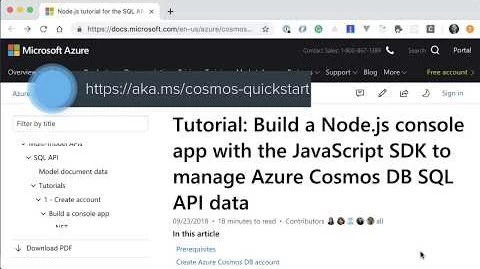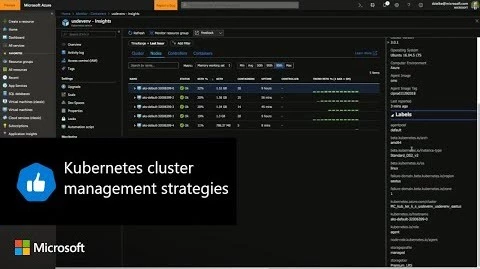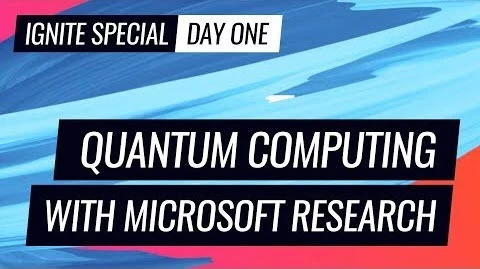Analytics, Azure Sphere, Azure Stream Analytics, Internet of Things
Azure.Source – Volume 70
Posted on
15 min read
Now in preview
Anomaly detection using built-in machine learning models in Azure Stream Analytics
Many customers use Azure Stream Analytics to continuously monitor massive amounts of fast-moving streams of data to detect issues that do not conform to expected patterns and prevent catastrophic losses. This in essence is anomaly detection. Built-in machine learning models for anomaly detection in Azure Stream Analytics significantly reduces the complexity and costs associated with building and training machine learning models. This feature is now available for public preview worldwide. See how to use simple SQL language to author and deploy powerful analytics processing logic that can scale-up and scale-out to deliver insights with millisecond latencies.
Anomaly detection using machine learning in Azure Stream Analytics
Update 19.02 for Azure Sphere public preview now available
Device builders can now bring the security of Azure Sphere to products even faster than ever before. The Azure Sphere 19.02 release is now available in preview and focuses on broader enablement of device capabilities, reducing time to market with new reference solutions, and continuing to prioritize features based on feedback from organizations building with Azure Sphere. To build applications that leverage this new functionality, you will need to ensure that you have installed the latest Azure Sphere SDK Preview for Visual Studio. All Wi-Fi connected devices will automatically receive an updated Azure Sphere OS.
Also in preview
- Public preview: Power BI Embedded support for application authentication with service principal
- Public preview: Azure Service Bus for Node.js
- SQL Database as a source of reference data input for Stream Analytics
Now generally available
Actuating mobility in the enterprise with new Azure Maps services and SDKs
The mobility space is at the forefront of the most complex challenges faced by cities and urban areas today. Azure Maps has introduced new SDKs and cloud-based services to equip Azure customers with the tools necessary to make smarter, faster, more informed decisions and to enable enterprises, partners, and cities to build the solutions that help visualize, analyze, and optimize mobility challenges all while getting the benefits of a rich set of maps and mapping services with the fastest map data refresh rate available.
Also generally available
News and updates
Get started quickly using templates in Azure Data Factory
Cloud data integration helps organizations integrate data of various forms and unify complex processes in a hybrid data environment. A number of times different organizations have similar data integration needs and require repeat business processes. Templates in Azure Data Factory help you get started quickly with building data factory pipelines and improve your productivity along with reducing development time for repeat processes. The templates are available in a Template gallery that contains use-case based templates, data movement templates, SSIS templates or transformation templates that you can use to get hands-on with building your data factory pipelines.
Quickly build data integration pipelines using templates in Azure Data Factory
Azure IoT Hub Java SDK officially supports Android Things platform
Connectivity is often the first challenge in the Internet of Things (IoT) world. That’s why we released Azure IoT SDKs to enable building IoT applications that interact with IoT Hub and the IoT Hub Device Provisioning Service. These SDKs cover most popular languages in IoT development including C, .NET, Java, Python, and Node.js, as well as popular platforms like Windows, Linux, OSX, and MBED all with support for iOS and Android for enabling mobile IoT scenarios. We are happy to share that the Azure IoT Hub Java SDK now officially supports the Android Things platform so developers can leverage the operating system on the device side, while using Azure IoT Hub as the central message hub that scales to millions of simultaneously connected devices.
Azure IoT Edge runtime available for Ubuntu virtual machines
Azure IoT Edge is a fully managed service allowing you to deploy Azure and third-party services to run directly on IoT devices, whether they are cloud-connected or offline, and offers functionality ranging from connectivity to analytics to storage all while allowing you to deploy modules entirely from the Azure portal without writing any code. Azure IoT Edge deployments are built to scale so that you can deploy globally to any number of devices or to simulate the workload with virtual devices. Now generally available, open-source Azure IoT Edge runtime preinstalled on Ubuntu virtual machines.
Azure IoT Edge VM on Azure Marketplace
Monitor at scale in Azure Monitor with multi-resource metric alerts
Customers rely on Azure to run large scale applications and services critical to their business. To run services at scale, you need to setup alerts to proactively detect, notify, and remediate issues before it affects your customers We’ve just released multi-resource support for metric alerts in Azure Monitor to help you set up critical alerts at scale. Learn about metric alerts in Azure Monitor that work on a host of multi-dimensional platforms and custom metrics; and can notify you when the metric breaches a defined threshold. *This functionality is currently only supported for virtual machines with support for other resource types coming soon.
How Azure Security Center helps you protect your environment from new vulnerabilities
Recently the disclosure of a vulnerability (CVE-2019-5736) was announced in the open-source software (OSS) container runtime, runC allowing an attacker to gain root-level code execution on a host. Azure Security Center can help you detect vulnerable resources in your environment within Microsoft Azure, on-premises, or other clouds. See how Azure Security Center can help you detect that an exploitation has occurred and to alert you.
Announcing launch of Azure Pipelines app for Slack
Use the Azure Pipelines app for Slack to easily monitor the events for your pipelines. Set up and manage subscriptions for completed builds, releases, pending approvals (and more) then get notifications for these events in your Slack channels.
The February release of Azure Data Studio is now available
Azure Data Studio is a new cross-platform desktop environment for data professionals using the family of on-premises and cloud data platforms on Windows, MacOS, and Linux. The February release of Azure Data Studio (formerly known as SQL Operations Studio) is now in general availability. New features include: A new Admin Pack for SQL Server, Added Profiler filtering, Added Save as XML, Added Data-Tier Application Wizard improvements, Updates to the SQL Server 2019 Preview extension, Results streaming turned on by default, and important bug fixes.
Additional news and updates
- Azure API Management update February 14
- CVE-2019-5736 and runC vulnerability in AKS
- CVE-2019-5736 fix for Azure IoT Edge
- Azure Automation supports the Azure PowerShell Az module
- New language functions in Stream Analytics
- Feature update: Serial console for Azure Virtual Machines
- Azure DevOps Roadmap update for 2019 Q1
Technical content
Controlling costs in Azure Data Explorer using down-sampling and aggregation
Azure Data Explorer (ADX) is an outstanding service for continuous ingestion and storage of high velocity telemetry data from cloud services and IoT devices. In this helpful post, we see how ADX users can take advantage of stored functions, the Microsoft Flow Azure Kusto connector, and how to create and update tables with filtered, down-sampled, and aggregated data for controlling storage costs.
Azure Stack IaaS – part one
Azure Stack at its core is an Infrastructure-as-a-Service (IaaS) platform and has created a lot of excitement around new hybrid application patterns, consistent Azure APIs to simplify DevOps practices and processes, the extensive Azure ecosystem available through the Marketplace, and the option to run Azure PaaS Services locally, such as App Services and IoT Hub. Underlying all of these are some exciting IaaS capabilities that this new Azure Stack IaaS blog series outlines.
Benefits of using Azure API Management with microservices
The IT industry is experiencing a shift from monolithic applications to microservices-based architectures. The benefits of this new approach include independent development and the freedom to choose technology, independent deployment and release cycle, individual microservices that can scale independently, and reducing the overall cost while increasing reliability. Azure API Management is now available in a new pricing tier with billing per execution especially suited for microservice-based architectures and event-driven systems. Explore how to design a simplified online store system, why and how to manage public facing APIs in microservice-based architectures, and how to get started with Azure API Management and microservices.
Maximize throughput with repartitioning in Azure Stream Analytics
Customers love Azure Stream Analytics for its ease of analyzing streams of data in movement, with the ability to set up a running pipeline within five minutes. Optimizing throughput has always been a challenge when trying to achieve high performance in a scenario that can't be fully parallelized. You can now use a new extension of Azure Stream Analytics SQL to specify the number of partitions of a stream when reshuffling the data. This new capability unlocks performance and aids in maximizing throughput in such scenarios. The new extension of Azure Stream Analytics SQL includes a keyword INTO that allows you to specify the number of partitions for a stream when performing reshuffling using a PARTITION BY statement. This new keyword, and the functionality it provides, is a key feature to achieve high performance throughput for the above scenarios, as well as to better control the data streams after a shuffle
Moving your Azure Virtual Machines has never been easier!
Because of geographical proximity, a merger or acquisition, data sovereignty, or SLA requirements, we are often approached by customers who want to change the region in which their Azure virtual machine is currently deployed to another target region. To meet this need, Azure is continuously expanding; adding new Azure regions, and introducing new capabilities. Walk through the steps you need to move your virtual machine as is (or to increase availability), across regions.
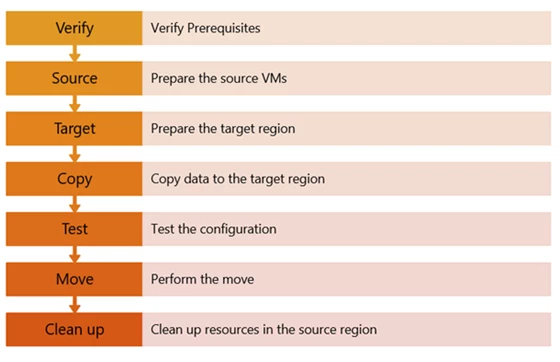
Protect Azure Virtual Machines using storage spaces direct with Azure Site Recovery
We all need to protect our business-critical applications. Storage spaces direct (S2D) lets you host a guest cluster on Microsoft Azure which is especially useful in scenarios where virtual machines (VMs) are hosting those critical applications like SQL, Scale out file server, or SAP ASCS. Learn how the Azure Site Recovery support of storage spaces direct allows you to take your higher availability application and make it more resilient by providing a protection against region level failure. Disaster recovery between Azure regions is available in all Azure regions where ASR is available. This feature is only available for Azure Virtual Machines’ disaster recovery.
Under the hood: Performance, scale, security for cloud analytics with ADLS Gen2
Since we announced the general availability of Azure Data Lake Storage (ADLS) Gen2, Azure has become the only cloud storage service that is purpose-built for big data analytics and is designed to integrate with a broad range of analytics frameworks enabling a true enterprise data lake, maximize performance via true filesystem semantics, scales to meet the needs of the most demanding analytics workloads, is priced at cloud object storage rates, and is flexible to support a broad range of workloads so that you are not required to create silos for your data. Take a closer look at the technical foundation of ADLS that will power the end-to-end analytics scenarios our customers demand.
Build a Node.js App with the npm Module for Azure Cosmos DB
Ever wondered what it's like to try the JavaScript SDK to manage Azure Cosmos DB SQL API data? Follow along with John Papa as he walks viewers through the Microsoft quickstart guide, and you'll be able to use the SDK in under six minutes!
Keep Calm, and Keep Coding with Cosmos and Node.js
John Papa digs into the Azure Cosmos DB SDK for Node.js to discover how good it feels when an SDK is fast to install, fast to learn, and fast to execute.
Real Talk JavaScript podcast – Episode 17: Azure Functions & Serverless with Jeff Hollan
Jeff Hollan, Senior Program Manager for Microsoft Azure Functions, joins John to talk about serverless and talks about his serverless doorbell project.
5 Azure Offerings I ❤️For Xamarin Development
It’s no secret that Matt is both an Azure and Xamarin fan. In this post, he rounds up five Azure offerings that are great for Xamarin development—Azure AD (B2C), Azure Key Vault, Azure Functions, Azure Custom Vision API, and Azure App Center—all of which can be accessed with a free Azure account!
Docker from the beginning
In this first part, Chris looks at the basics of containers and gives some hands-on advice and sample code to get the reader started. Future parts will explain the story of Docker including a look at Kubernetes and our own AKS service. And in part two, Chris looks at the Docker Volumes and how they can make for a great Developer Experience. Future parts will explain the story of Docker including a look at Kubernetes and our own AKS service.
Migrating Azure Functions f1 (.NET) to v2 (.NET Core/Standard)
In this post, Jeremy shared the lessons he learned upgrading his serverless link shortener app to the new Azure Functions platform.
Prototyping your first cloud-connected IoT project using an MXChip board and Azure IoT hub
Learn how to quickly build a prototype IoT project using Azure IoT Hub. Jim's blog post gives full instructions on how to get started with the MXChip board using Visual Studio Code, what Azure IoT Hub is, how to send messages and how to use device twins powered by Azure Functions to sync data.
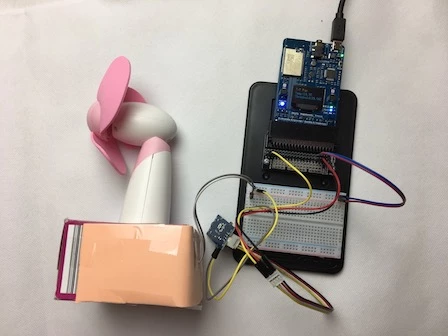
Kubernetes Basics
In this miniseries, Microsoft Distinguished Engineer and Kubernetes co-creator, Brendan Burns provides foundational knowledge to help you understand Kubernetes and how it works.
AZ 203 Developing Solutions for Microsoft Azure Study Guide
It's essential to be knowledgeable of how the cloud can bring the best value to the developer. App Dev Manager Isaac Levin shares some tips about how to best prepare for the Microsoft Certified Azure Developer Associate certification (AZ-203) exam.
Azure shows
Episode 266 – Azure Kubernetes Service | The Azure Podcast
The dynamic Sean McKenna, Lead PM for AKS, gives us all the details about the service and why and when you should use it for your cloud compute needs. Russell and Kendall get together with him @ Microsoft Ready for a great show.
HashiCorp Vault on Azure | Azure Friday
Working with Microsoft, HashiCorp launched Vault with a number of features to make secret management easier to automate in Azure cloud. Yoko Hyakuna from HashiCorp joins Donovan Brown to show how Azure Key Vault can auto-unseal the HashiCorp Vault server, and then how HashiCorp Vault can dynamically generate Azure credentials for apps using its Azure secrets engine feature.
Using HashiCorp Vault with Azure Kubernetes Service (AKS) | Azure Friday
As the adoption of Kubernetes grows, secret management tools must integrate well with Kubernetes so that the sensitive data can be protected in the containerized world. On this episode, Yoko Hakuna demonstrates the HashiCorp Vault's Kubernetes auth method for identifying the validity of containers requesting access to the secrets.
Azure Instance Metadata Service updates for attested data | Azure Friday
Azure Instance Metadata Service is used to provide information about a running virtual machine that can be used to configure and manage the machine. With the latest updates, Azure Marketplace vendors can now validate that their image is running in Azure.
Ethereum Name Service | Block Talk
This session provides an overview of the Ethereum Name Service and the core features that are included. We then show a demonstration of how this service can be useful when building decentralized applications.
Introducing Spatial operations for Azure Maps | Internet of Things Show
The ability to analyze data is a core facet of the Internet of Things. Azure Maps Spatial Operations will take location information and analyze it on the fly to help inform our customers of ongoing events happening in time and space. The Spatial Operations we are launching consist of Geofencing, Buffer, Closest Point, Great Circle Distance and Point in Polygon. We will demonstrate geofencing capabilities, how to associate fences with temporal constraints so that fences are evaluated only when relevant, and how to react to Geofence events with Event Grid. Finally, we will talk about how other spatial operations can support geofencing and other scenarios.
Building Applications from Scratch with Azure and Cognitive Services | On .NET
In this episode, Christos Matskas joins us to share the story of an interesting application he built using the Azure SDKs for .NET and Cognitive Services. We not only get an overview of creating custom vision models, but also a demo of the docker containers for cognitive services. Christos also shares how he was able to leverage .NET standard libraries to maximize code portability and re-use.
Open Source Security Best Practices for Developers, Contributors, and Maintainers | The Open Source Show
Armon Dadgar, HashiCorp CTO and co-founder, and Aaron Schlesinger talk about how and why HashiCorp Vault is a security and open source product: two things traditionally considered at odds. You'll learn how to avoid secret sprawl and protect your apps' data, ways for contributors and maintainers to enhance the security of any project, and why you should trust no one (including yourself).
Overview of Open Source DevOps in Azure Government | Azure Government
In this episode of the Azure Government video series, Steve Michelotti talks with Harshal Dharia, Cloud Solution Architect at Microsoft, about open source DevOps in Azure Government. Having a reliable and secure DevOps pipeline is one of the most important factors to a successful development project. However, different organizations and agencies often have different tools for DevOps. Harshal starts out by discussing various DevOps tools available, and specifically focuses this demo-heavy talk on open source DevOps tools in Azure Government. Harshal then shows how Terraform and Jenkins can be used in a robust CI/CD pipeline with other open source tools. For DevOps, your organization or agency can bring all your favorite open source tools and use them, but from within the highly scalable, reliable, and secure environment of Azure Government. If you’re into open source DevOps, this is the video for you!
How to create an Azure Functions project with Visual Studio Code | Azure Tips and Tricks
In this edition of Azure Tips and Tricks, learn how to create an Azure Functions project with Visual Studio Code. To start working with Azure Functions, make sure the “Azure Functions” extension is installed inside of Visual Studio Code.
How to manage virtual machines on the go via the Azure mobile app | Azure Portal Series
Managing your Azure virtual machines while you’re on the go is easy using the Azure mobile app. In this video of the Azure Portal “How To” series, learn how to use the Azure mobile app to monitor, manage, and stay connected to your Azure virtual machines.
How to monitor your Kubernetes clusters | Kubernetes Best Practices Series
Get best practices on how to monitor your Kubernetes clusters from field experts in this episode of the Kubernetes Best Practices Series. In this intermediate level deep dive, you will learn about monitoring and logging in Kubernetes from Dennis Zielke, Technology Solutions Professional in the Global Black Belts Cloud Native Applications team at Microsoft.
Simon Timms on Azure Functions and Processes – Episode 23 | The Azure DevOps Podcast
Simon Timms is a long-time freelance Software Engineer, multi-time Microsoft MVP co-host of ASP.NET Monsters on Channel 9, and also runs the Function Junction YouTube channel. He considers himself a generalist with a history of working in a diverse range of industries. He’s personally interested in A.I., DevOps, and microservices; and skilled in Software as a Service (SaaS), .NET Framework, Continuous Integration, C#, and JavaScript. He’s also written two books with Packt Publishing: Social Data Visualization with HTML5 and JavaScript and Mastering JavaScript Design Patterns. In this week’s episode, Simon and Jeffrey will be discussing Azure Functions and running processes in Azure. Simon explains how the internal model of Azure Functions works, the difference between Azure Functions and Durable Functions, the benefits and barriers to Azure Functions, and much, much more.
Events
Learn how to build with Azure IoT: Upcoming IoT Deep Dive events
Microsoft IoT Show, the place to go to hear about the latest announcements, tech talks, and technical demos, is starting a new interactive, live-streaming event and technical video series called IoT Deep Dive.
Join us in Seattle from May 6-8 for Microsoft Build
Join us in Seattle for Microsoft’s premier event for developers. Come and experience the latest developer tools and technologies. Imagine new ways to create software by getting industry insights into the future of software development. Connect with your community to understand new development trends and innovative ways to code. Registration goes live on February 27.
Customers, partners, and industries
PyTorch on Azure: Deep learning in the oil and gas industry
Drilling for oil and gas is one of the most dangerous jobs on Earth. Workers are exposed to the risk of events ranging from small equipment malfunctions to entire off shore rigs catching on fire.
How to avoid overstocks and understocks with better demand forecasting
Promotional planning and demand forecasting are incredibly complex processes. Something seemingly straight-forward, like planning the weekly flyer, requires answers to thousands of questions involving a multitude of teams deciding which products to promote, and where to position the inventory to maximize sell-through. Explore how Rubikloud’s Price & Promotion Manager enables AI-powered optimization for enterprise retail and allows merchants and supply chain professionals to take a holistic approach to integrated forecasting and replenishment.
Ignite: The Tour was in Australia last week, which is home to A Cloud Guru. Check out this three-part report from Lars Klint.
Azure This Week – Ignite Special – 12 February 2019 | A Cloud Guru – Azure This Week
Lars reports from an exclusive invite-only tour of the Microsoft Quantum research facility at Sydney University.
Azure This Week – Ignite Special – 13 February 2019 | A Cloud Guru – Azure This Week
On this special edition episode of Azure This Week, Lars talks to Anthony Chu, Christina Warren, Jason Hand and looks at the new support for Azure SQL Database in Azure Stream Analytics.
Azure This Week – Ignite Special – 14 February 2019 | A Cloud Guru – Azure This Week
On day 2 of Microsoft Ignite | The Tour | Sydney Lars talks Azure security with Damian Brady, Tanya Janca, Orin Thomas and Troy Hunt.


